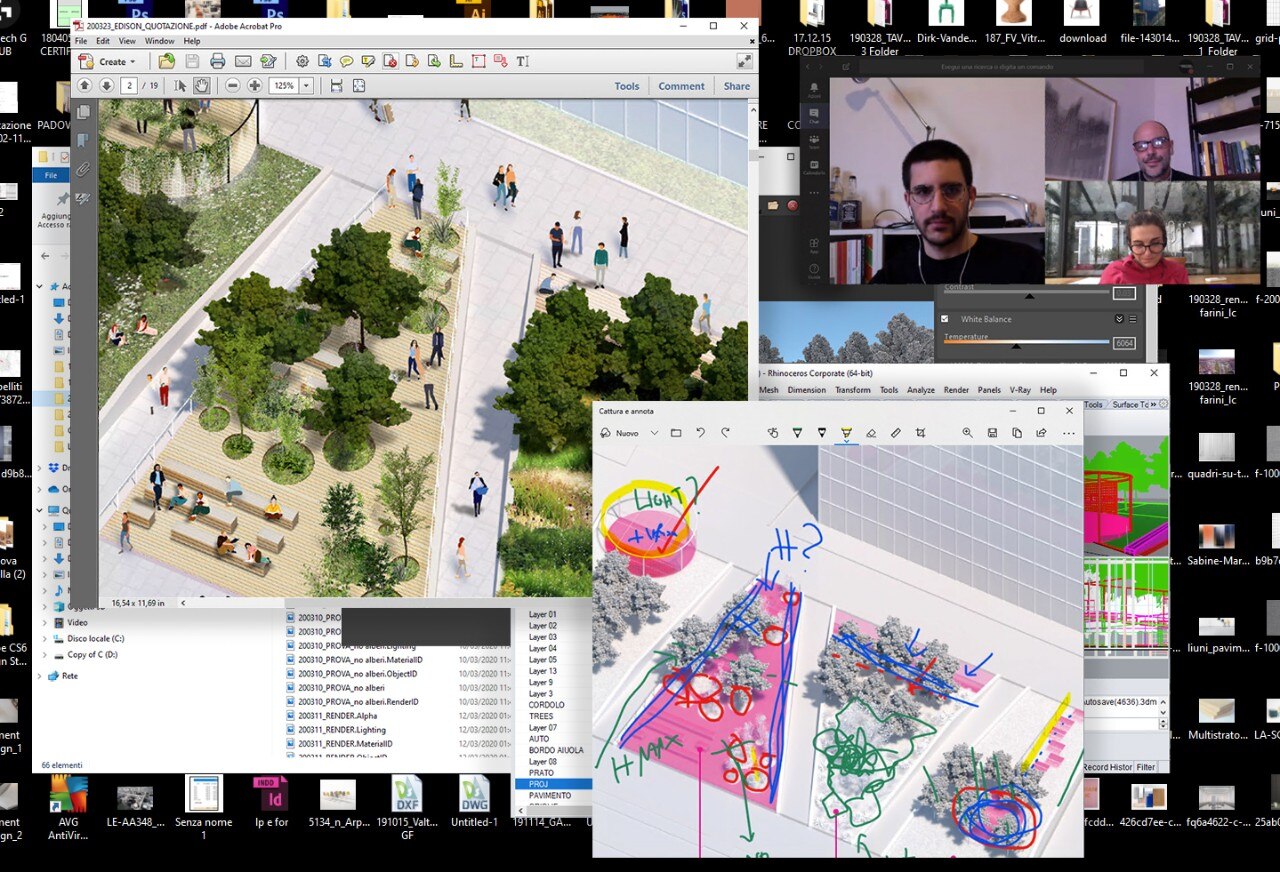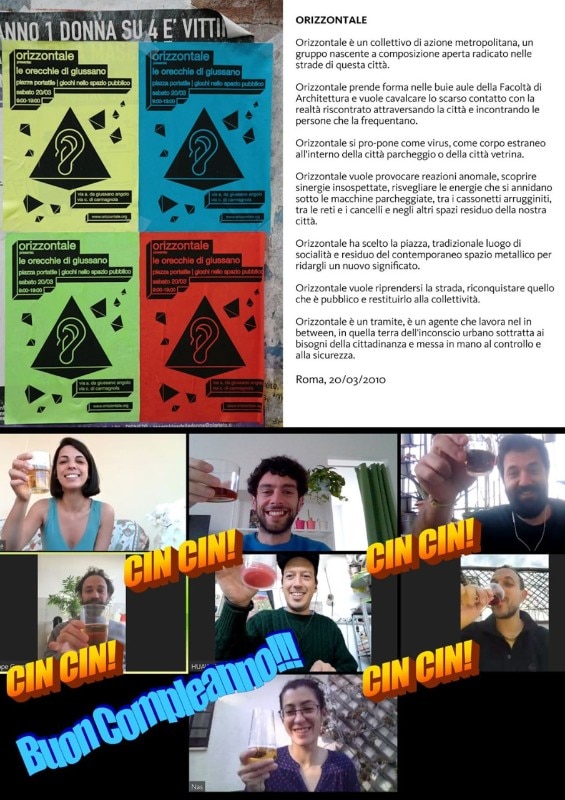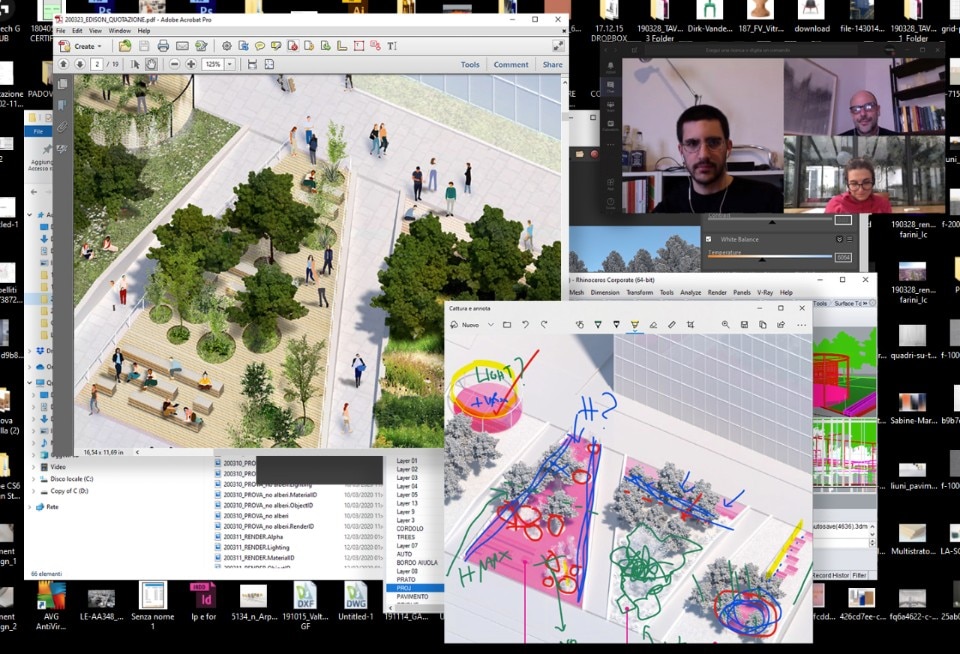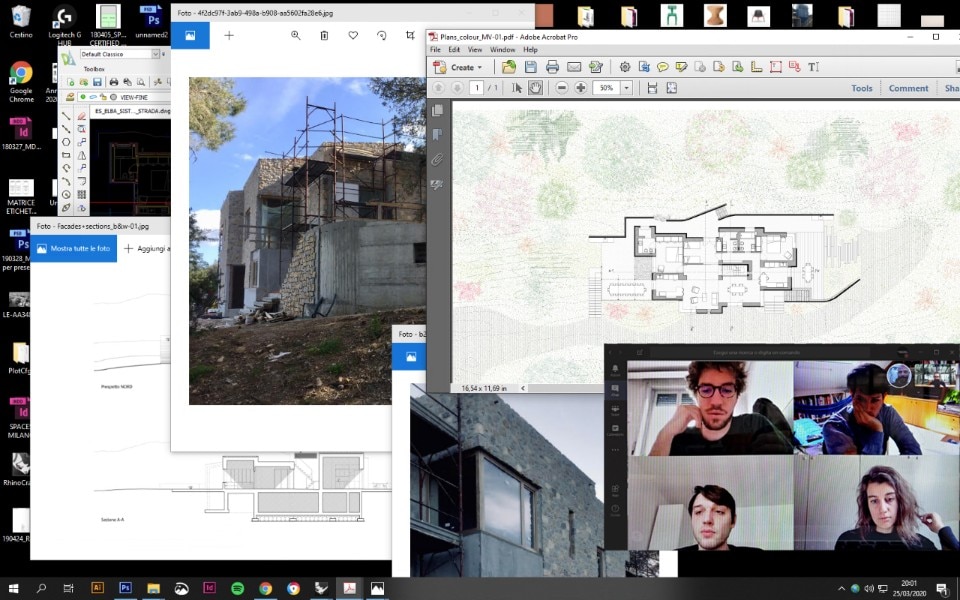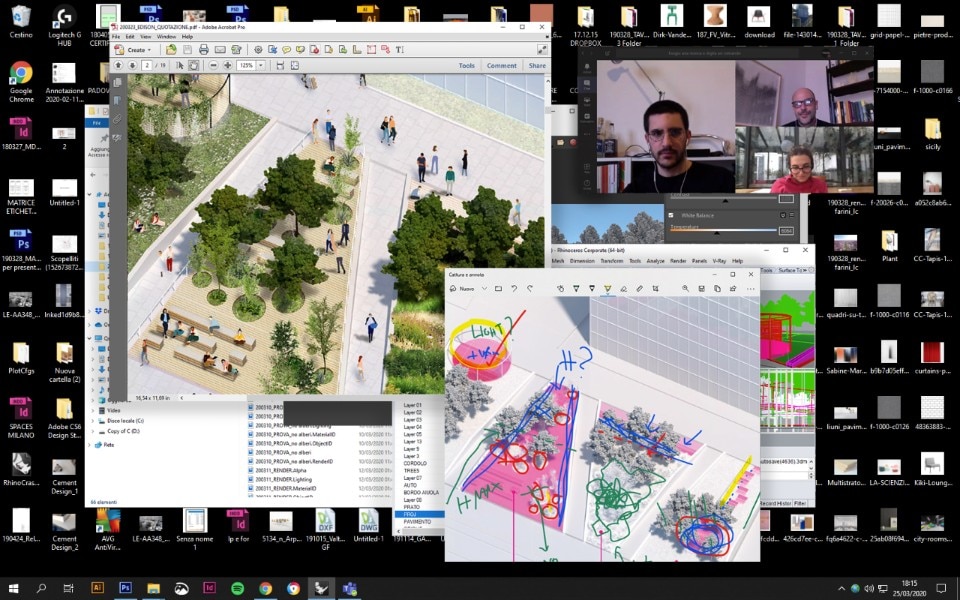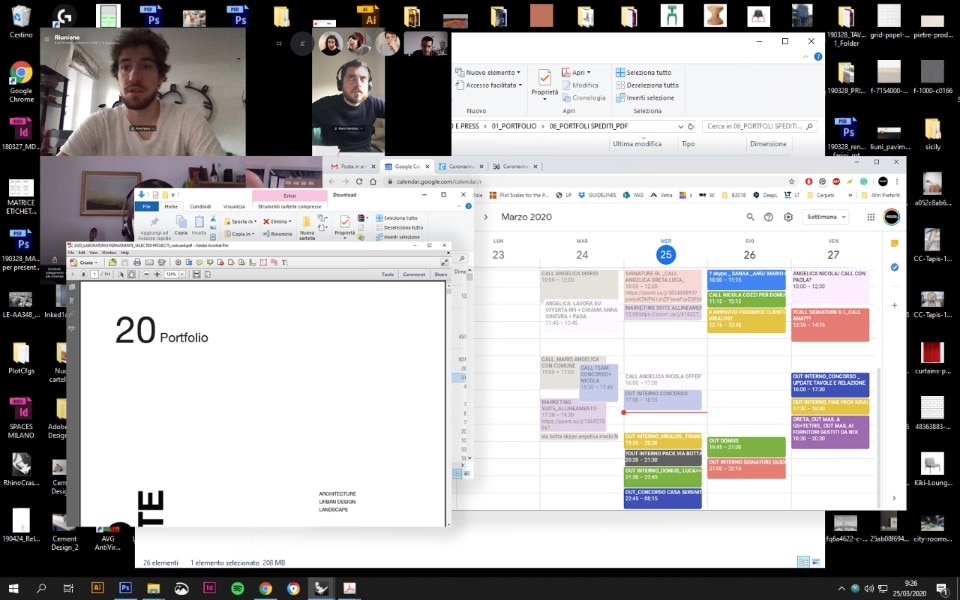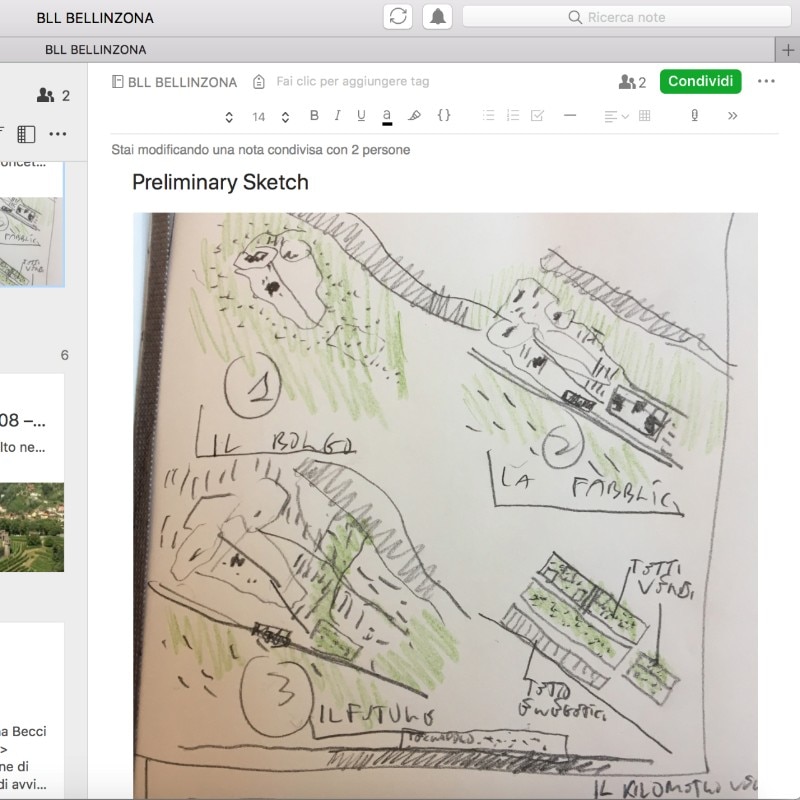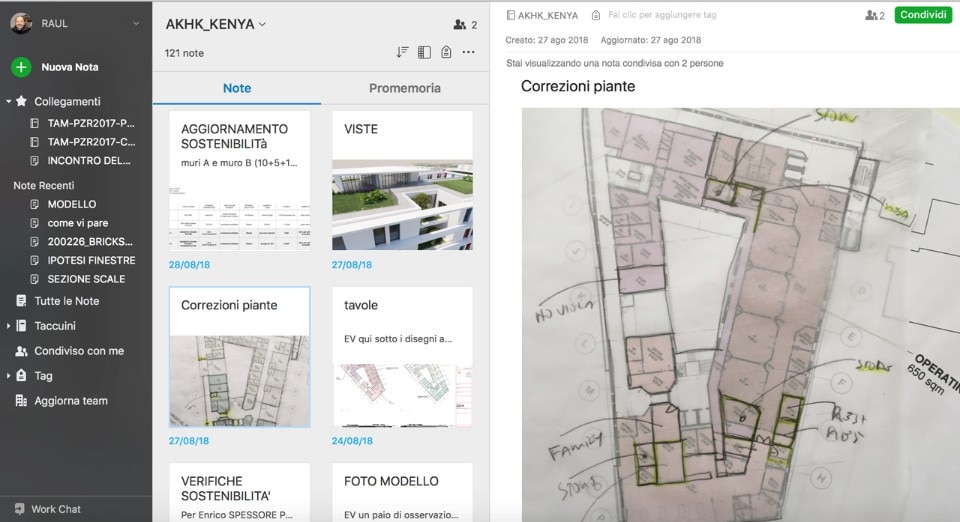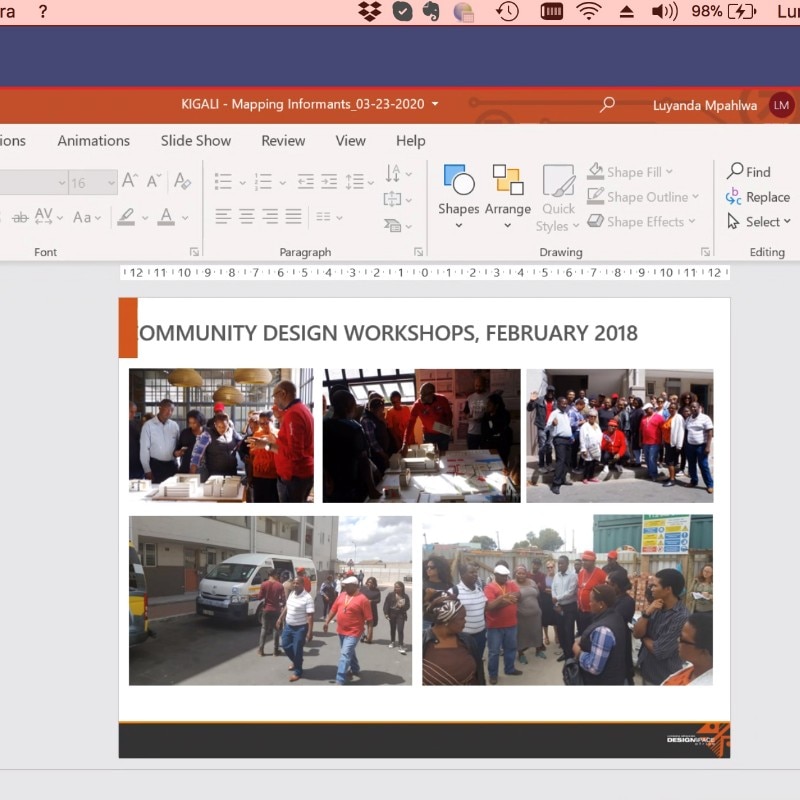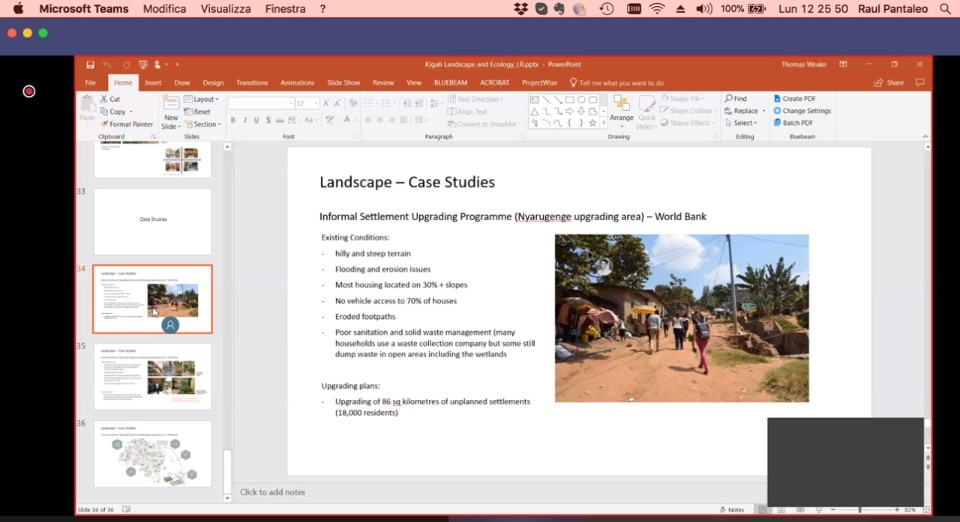How is the world of architecture reacting to the Coronavirus emergency?
Laboratorio Pemanente, Mario Cucinella Architects, Orizzontale and TAMassociati recounts how this new – and hopefully short – condition of forced isolation has changed the vital rhythm of the studies. They tell us what the tools, ideas and feelings are born and evolved in recent days. And they give us some ideas on what the future of architecture can be, between physical and digital, public and private, individual and collective.
Enrico Iascone, Sole Director of MCA – Mario Cucinella Architects, tells us: “we have understood the seriousness of the situation since the epidemic broke out in China, given that Mario Cucinella’s wife is of Chinese nationality. As soon as the concern arose in Italy, we began to monitor and prepare, above all for the fact that in Milan, one of the cities most affected by the health emergency, we have some important work in progress.”
For an office like MCA, the transition to smart working was certainly more complex and gradual. “We have self-regulated by anticipating what the government measures have been. As the situation worsened, we began to replace all the meetings with conference calls, and then to provide the necessary tools for all the workers of the company for remote work. Most of the construction sites in progress have been closed, while those that are moving forward are experiencing significant slowdowns.”
Although slightly slowed down, the studio’s work does not stop: “We are working on all those preparatory and work-setting activities, in order to be ready to start again – hopefully as soon as possible,” says the architect. “The professional and human response of our collaborators – of any training and age – has been of great responsibility. I think this component is the one I'm most proud of.”
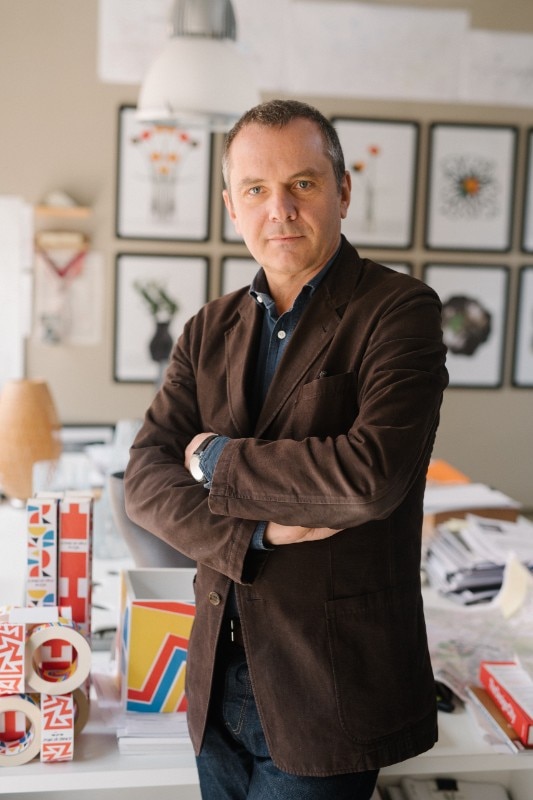
Although smaller than MCA, TAMassociati has developed over the years a work management system that allows them to reduce the damage in this emergency period. Raul Pantaleo, co-founder of the studio, says: “This is a period in which many projects should have started. Obviously the pandemic messed up our plans. We are rescheduling our work for August, hoping that the situation will be much less serious than it is now. But for our workflow, not much has changed. Now we are divided between Trieste, Venice, Bologna and Paris, each one at home, but TAMassociati has for some time now had a systemic structure, which obviously needs physical spaces but make us independent of them.”
Their reasoning goes beyond emergency situations, but stems from a desire to change the authorial and individualistic approach with which architecture is designed.
“What we have developed over the past two or three years is a creative work process in the form of collective intelligence, so there is no individual creator of a project who then needs collaborators to develop it, but it is a flow of work where the various components are inserted to then generate a final product. These types of procedures need affinity, a lot of team work and of themselves. It’s a process that needs to be developed and consolidated, which nobody taught us at university,” says the architect.
“We are now working mainly on some hospitals in Africa, so it is essential for us to be able to operate remotely. For some years now we have been supported by the Autodesk Foundation which has equipped us with the collaboration version of Revit software. For them we test collaborative structures in emergency situations.”
Polivan, Polibus, Politrack: Emergency NGO's Mobile Clinics providing healthcare and guidance in disadvantaged areas. On...
Pubblicato da TAMassociati su Mercoledì 25 marzo 2020
The Milan studio Laboratorio Permanente is of completely opposite opinion. The founders of the studio, Angelica Sylos Labini and Nicola Russi, tell us: “Smart working requires an engineering of the work, in the sense that it is necessary to precisely organise the calendar, deliveries and communication. In our opinion this takes away any form of spontaneity. The artisanal dimension is lost: there is no longer the occasion to pass by a table, exchange ideas immediately, directly see the designs that are being made... It requires a structure to which we were not used and which is not in the our DNA.”
“We often use maquettes to develop the concepts. This tool is irreplaceable. With a computer, every action you do is a command, while if you have the physical model in front of you, the actions are instinctive and uncontrolled, the logical-rational passage that makes you objectify an action is missing. Sharing a shared 3D model will never be like sitting around a table,” explain the architects. “In our case, we can’t say ‘video kills the radio stars’. In the future, new digital communication tools will be added, but the physical component cannot be replaced. If material life in space were replaceable, perhaps there would be no need for architecture anymore.”
Laboratorio Permanente is taking advantage of the days of confinement to interact with the other “inhabitants” of their homes. “In this period of suspension we have been working on a Living Herbarium. We all have seedlings on terraces, balconies and windowsills. Every week we make short videos that we publish on Instagram. We monitor their growth and by portraying them on a neutral background we want to create a small living catalog.”
Orizzontale’s work cannot be separated from public space and human contact, from direct action and the participation of local communities. The collective tell us: “This is usually the busiest period of the year for us, in which we travel all around Italy and Europe for conferences, workshops and commissions. Many of the projects we were working on were postponed to autumn or perhaps directly to 2021 ... everything depends on how the situation will evolve not only in Italy but also in other countries.”
A representative example is Prossima Apertura, the project for a square near Rome, which combines the traditional construction work with an innovative spatial management and design. “The timing was extremely unfortunate: we finally arrived at the first opening of the first portion of the square. We should have started the public participation activities that constitute the most experimental and interesting part of the project, and on which we invested a lot of time and energy. The first workshop was supposed to start on 9 March... Initially all public activities were suspended and then the building site itself,” the architects explain.
“We are using these days for a slower reflection and long-term planning and vision. This crisis has given us the opportunity to be together – albeit virtually – which does not happen often. This event will certainly be a watershed and is already highlighting some of the issues that we will address: new forms of solidarity and surveillance, the organization of work, the relationship between public and private, the intensity and density of daily life, the rediscovery of new spaces and times of life...”


